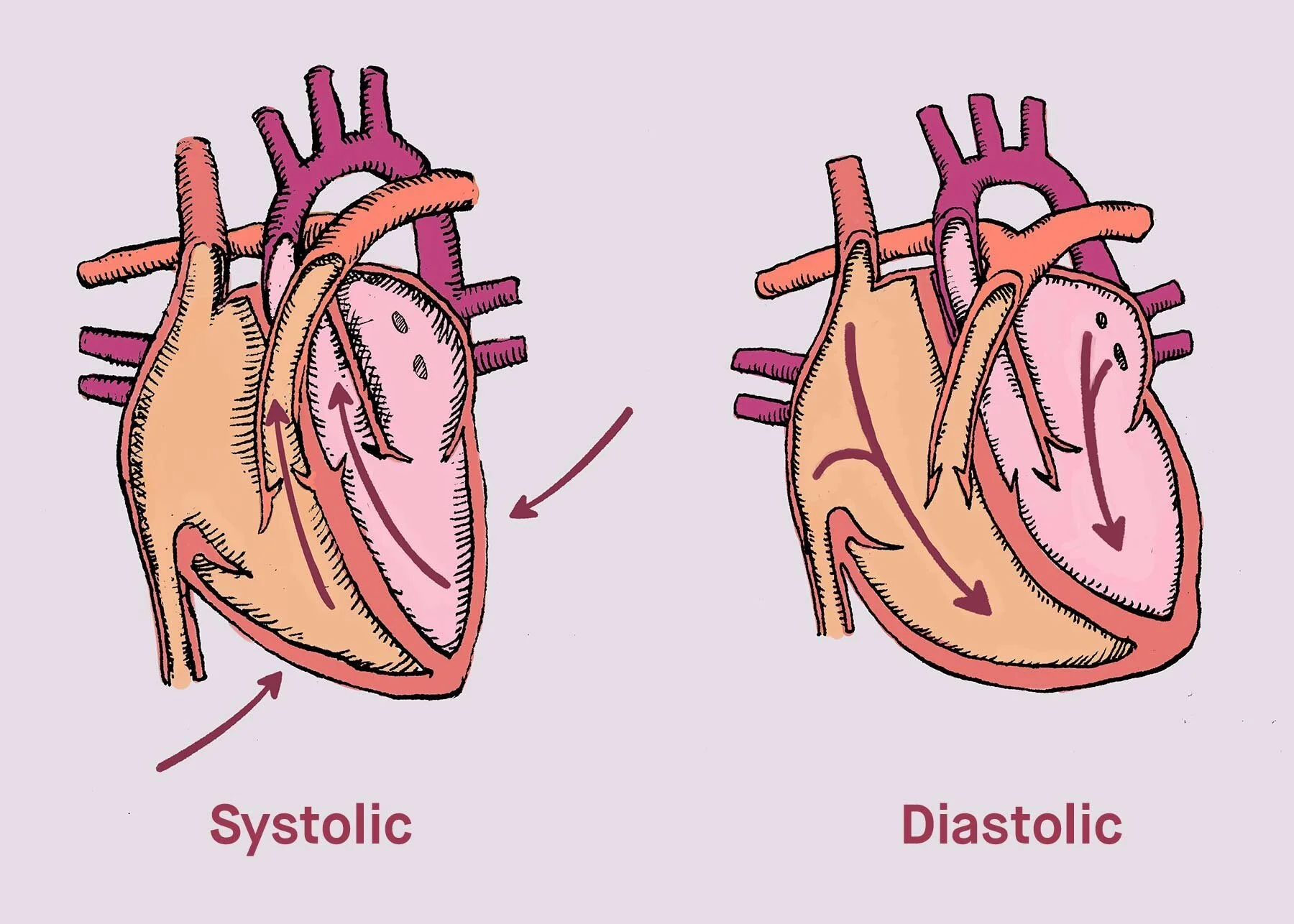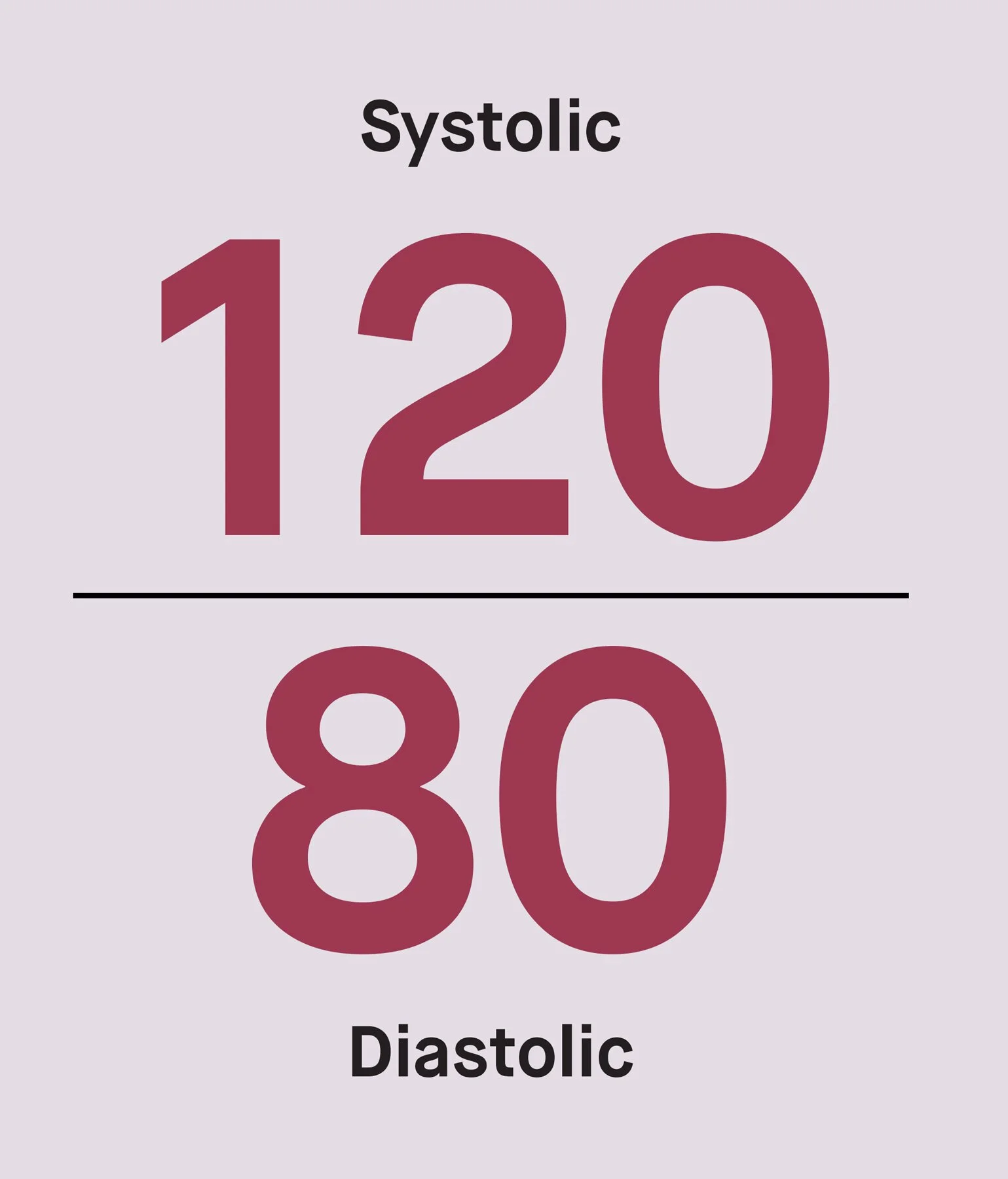health guides illustrated
Understanding Your Blood Pressure Numbers
The Numbers:
Your blood pressure reading measures the force of your blood moving through your arteries when your heart beats and when it rests. Blood pressure is recorded with two numbers: a systolic number over a diastolic number.
Systolic = Pumping: The systolic number is the top number on your reading and measures the pressure on artery walls when the heart is beating and pumping blood.
Diastolic = Filling: The diastolic number is the bottom number on your reading and measures the pressure on artery walls when the heart is resting between beats and filling with blood.
Which number is more important?
It's common for providers to focus on systolic blood pressure. Higher systolic numbers are a major risk factor for cardiovascular disease for people over 50. Over time, systolic blood pressure may rise for many reasons, including increased stiffness of large arteries and buildup of plaque in arteries as we age.


